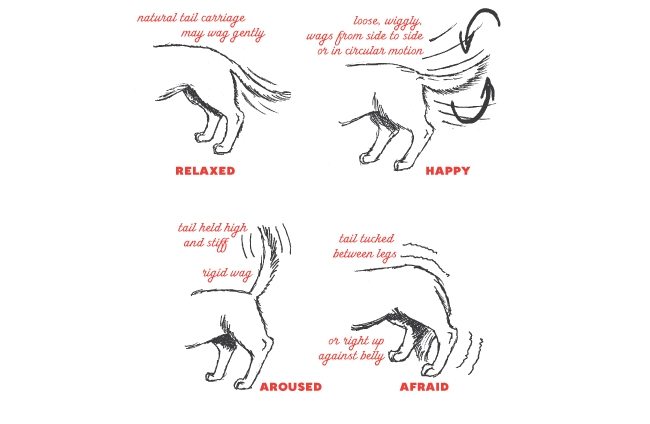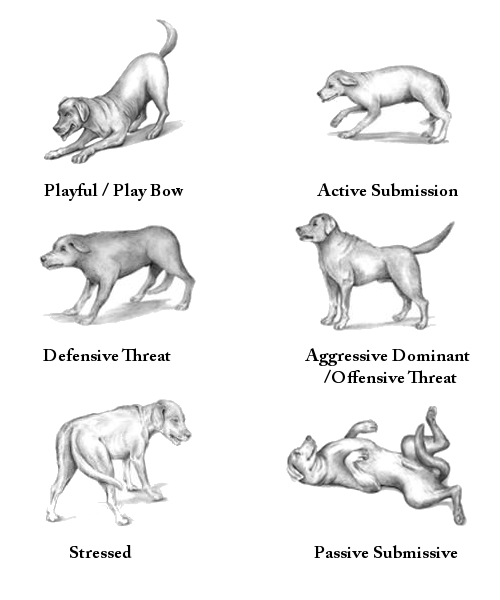Signs To Understand Dogs Better: Know Your Pet!
There are various subtle signs which dogs use to communicate with you. And all you need is a keen eye and the right knowledge to help you pet or a stray! This article will help you know “signs that help you understand dogs better“! So let’s get started!

Signs That Help You Understand Dogs Better!
We know for a fact that dogs can’t speak. But only a few know that dogs communicate using certain signals. Dogs use their tails, sounds, and body.Thus, an understanding of these signals can help improve the bond between you and your dog (and maybe even save his life!). So here is a list of Signs That Help You Understand Dogs Better.
1) Tail Wagging
The most common misinterpreted signal- if a dog’s wagging its tail, it’s happy. Dogs generally wag tails when they are excited. However this arousal can be happiness or even frustration. To understand the dog, observe the frequency and direction of the wagging and position of the tail.
- Basically, faster the wag more aroused the dog.
- Firstly, slow side to side wags when you meet your dog usually means he’s comfortable and excited. It’s the sign of a relaxed dog.
- Secondly, a faster twitch-like wag indicates a higher level of arousal and possibly in a negative way. Think of a guard dog on alert.

Further, the direction of wagging may also contain clues. A recent study on tail-wagging showed that dogs-
- Wag more to the right when they feel positive, like interacting with their owner.
- Wag more to the left when faced with something negative.
- And of course, the helicopter wag where the tail moves in circles. Dogs exhibit this behavior when they are very happy or are meeting someone beloved.
Lastly, the position of the tail gives serious cues about his emotional state. Essentially, the higher the tail, the more assertive the dog.
- If the tail is tucked between legs or pointing to the ground, it usually means fear, stress or surrender.
- Dogs with tails high up as a flag are confident of even aggressive.
- Further, a relaxed dog has a neutral tail position. This position depends on the breed of your dog.
2) Sounds
Dogs mostly communicate with their physical presence. However, there are some sound signals you can rely on to interpret what they’re thinking or feeling. We’ve covered these four for you.
a) Panting :
– A relaxed dog will pant very quietly. This can often be taken for light breathing!
– Dogs pant slightly when they are excited or energetic.
– Your dog’s breathing may increase when you ask him for a walk. Excitement and even nervousness can cause panting.

In addition, one should pay attention when they notice “heavy panting”. It’s generally a sign that something is seriously wrong with the dog. Also, dogs pant when they are overheating or suffering from trauma or illness.
– If you notice your dog panting, keep him cool and let him rest.
– If the panting persists for long, schedule a visit to your vet to examine if there are any underlying conditions.
b) Singing :
No, dogs aren’t the world’s greatest singers! But you may here them barking in almost singing- like manner. So when you enter the home and hear your dog sing to you, he’s really excited to see you and enjoys playing with you. Singing means your doggo is in a good mood!

c) Whining :
Now whining is difficult to identify.So it may have several interpretations depending on your dogs condition.
- Dogs mostly whine to ‘ask’ for something, like attention, dinner or playtime.
- While some dogs might whine when they are sad,injured or stressed. They might use whining to express their discomfort.
- If your dog is potty trained, he may whine to let you know he needs to get relieved! ( Kuddos to the training!)
But the best way to identify the reason for whining is to know your dog, understand his needs and pair vocal cues with other body signals.
d) Barking :
Barking for dogs is yelling for humans. It’s the only way to express what they feel.
- A continuous rapid barking is often an alert. Your dog may have noticed someone in his territory and wants to make his housemates aware.
- Loud, deep barks are often a warning to strangers: “Don’t take a step closer, I don’t trust you.” So follow his advice and proceed cautiously.
- Finally, a yelping bark often comes from a dog that is injured. If you come across a dog that’s yelping, call for help. He may need urgent care, but keep in mind that an injured dog might also be a cautious one.
Howling is similar to barking. A gift from their ancestors wolves. They howl to announce their presence as well as communicate with other dogs in the area. While it can be loud and annoying, it is just another form of communication for your dog.
3) Body
Dogs use their body parts to give various signals. A keen observation their hair, posture, mouth and ears may give several insights into your pets mind!
a) Hair :
Similar to cats, the hair at the back of his head, neck, or even the whole body may lift up when the dog gets aggressive. Its a sign warning you to stay away and keep the distance. However, it may not be directed to you! Dogs have a greater sense of smell and hearing. He may depict this sign to warn you of the impending danger nearby. He might be trying to alert you and protect you!
b) Posture:
An understanding of you canine’s body posture can clear several doubts you have about his behaviour. moreover, it may give you an insight to his emotional state!

- A cowering dog that is hunched toward the ground is a sign of fear or stress. Also, the dog may be trying to get away from something. Furthermore, this posture makes the dog appear smaller.
- The opposite posture is a dog with his or her weight shifted forward. This dog is trying to get closer to something. In this case, the dog is trying to appear larger.
- Another easy-to-read signal is the play bow. This is when dogs place their chest on the ground with their rump in the air. It’s used to initiate play with other dogs and even with people!
- A less easily understood signal is the paw raise. In the pointing breeds like the English Setter, it’s a part of pointing behavior where the dog indicates nearby prey. However, a raised paw often indicates a dog is uncertain about a situation or perhaps feels a bit insecure.
c) Facial Expressions :
Dogs, just like humans communicate using their face too! So here are some expression signals which can help you understand dogs better.

- Yawning- People yawn when they are tired. However, in the case of dogs, they yawn when they’re stressed. According to Turid Rugaas, author of On Talking Terms With Dogs: Calming Signals, dogs use yawning to calm themselves and others, including their owners intense situations. Also, don’t be surprised if your dog yawns back! Alike humans, dogs ‘catch‘ yawns too! Interesting isn’t it?!
- Lip licking – This is another misinterpreted signal. Unlike humans, who lick after a delicious meal, dogs lick their lips when they are anxious. Thus, the next time when your dog licks your face you will now know that he has no desire to lick your face!
- You would be surprised to know that dogs smile too! The times when they show their teeth and growl, is usually the aggressive signal. So let’s not mix that with the cute smiles they give! A smile is often accompanied with loose and wiggly posture and they look rather cute!
d) Ears :
Last but not the least, a dog’s ears can surely tell a lot! Dog ears come in all shapes and sizes, allowing some dogs to better communicate with them than others.

- Calm, contented dogs tend to relax their ears in a position that is natural to them.
- Secondly, when alert, or if feeling aggressive or dominant, a dog will raise their erect/tense ears higher on their head and point them at the direction of their interest.
- However, If a dog has their ears pulled flat against their head, the dog is likely fearful, worried or submissive.
Moreover, if there are any other signals like dog pressing his head on the wall, loss of appetite or persistent vomits, contact your vet immediately.
Concludingly, these are some signs that will help you understand dogs better. The dog is a man’s best friend- and it’s true indeed! Also, there have been times when dogs have protected their owners from life-threatening situations. Owing to such love and affection, we think it’s our duty to make an effort to understand this loving and loyal animal! Also, do let us know if you found this article helpful!
Till then, eat, play, and give your dogs lots of love!





Pingback: Fascinating Facts That Prove Dogs And Cats Aren’t From The Same Planet!